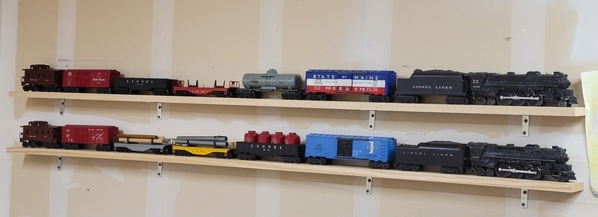Hi all,
I recently bought a Lionel 2026 from 1948 or 1949, and I would like to know if people prefer the early version which is a 2-6-2 or the later version which was a 2-6-4. In my personal opinion, the early version I prefer because it's fancier and is more unique, since the later is basically an everyday 2-6-4, and the earlier one has smoke unlike the later one. Which one do you like better?


















